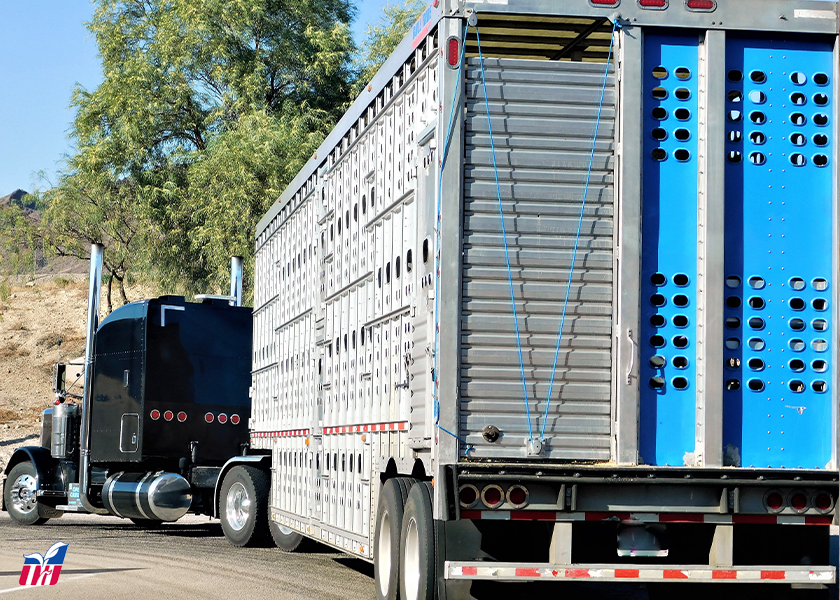Livestock Analysis | June 16, 2023

5-day outlook: Seasonal factors point to sustained hog and pork strength next week, with packers likely trying to boost the weekly slaughter total as much as possible as they fill grocery store orders for Independence Day features. History suggests grocers will finish buying beef for the holiday weekend (which will last four days for many as they take off Monday, July 3). But it also indicates grocers will likely continue buying pork into the week following. Meanwhile, hog supplies are approaching their lowest levels of the year, which should add to the upward price pressure. This week’s total, at 2.330 million head came in 1.4% below the year-ago figure of 2.358 million, which suggests hog supplies are unexpectedly falling below year-ago levels. Given the extreme highs now being posted by beef values, this favors increased substitution demand for the various pork grilling cuts. Look for futures to have an upward bias as well.
30-day outlook: Futures strongly imply the seasonal cash market top will arrive in late June or early July, then decline through the balance of the year. It’s not terribly uncommon for the market to peak in July, so the indicated modest advance from now [with the preliminary hog index quote for Thursday at $87.54 (up 77 cents from Wednesday) and July futures settling a $92.95]. Conversely, we are not convinced the top will come that quickly, especially given the late-April low for the cash equivalent price. Ending-April pork belly stocks at 81.2 million pounds were comparatively large, which likely mitigates against a hog/pork rally being sustained into late summer. On the other hand, grocers are featuring bacon much more aggressively than in recent years, which could power extraordinarily strong bacon demand from consumers.
90-day outlook: Hog futures are not anticipating an especially sharp seasonal drop from summer highs to fall lows. For example, those losses reached about $50.00 from highs just over $122.00 to the $70.00-$72.00 area the past two years (although the drop from the 2022 high didn’t end until this spring). In contrast, the spread between the July and December futures is currently around $17.00. Of course, the market will likely start from a much lower level this summer. We don’t particularly disagree with the futures market’s assessment of second-half prospects, although we expect fall-winter supplies to drop several percentage points from year-ago levels, thereby reflecting the drastic price reduction in spring hog prices versus the highs reached the past two years. In fact, we can’t rule out a much stronger fall-winter market if grocers shift features dramatically away from beef to pork.
What to do: Get current with advised feed coverage. Be prepared to extend coverage when the markets signal lows are in place.
Hedgers: Carry all risk in the cash market for now.
Feed needs: You are hand-to-mouth on both meal and corn-for-feed needs.
Price action: Firming cash market action seemed to boost cattle and feeder futures Friday, with the expiring June live cattle contract rising 77.5 cents to $178.35 at the close. Most-active August rallied 65 cents to $171.725; the settlement price represented a weekly slide of 12.5 cents. August feeder futures settled at $234.925, which marked a daily advance of 80 cents and a weekly drop of $4.075.
5-day outlook: Packer buyers seemed to win the weekly battle over cash cattle prices this week, with the Monday-Thursday five-area average at $186.78 falling $2.28 from the comparable week-ago level. We expect a weekly decline of about $2.00 when today’s cash action is added to the tally. On the other hand, today’s futures strength suggests packers didn’t have everything their own way, which may bode well for next week’s activity. Sustained wholesale strength also favors bulls, with today’s midsession quote for choice beef climbing another 88 cents to $342.95. Again, this topped the June 2021 peak, making this the third highest level reached by wholesale beef prices (behind the tops of April 2020 and August 2021). Packers have apparently slowed processing rates to the point where feedlot marketings aren’t as current, as indicated by the latest steer dressed weight reading at 887 pounds per head; that’s up five pounds annually. History suggests wholesale strength through noon next Wednesday, with the complex potentially becoming increasingly vulnerable to downside pressure from that point.
30-day outlook: A seasonal drop from the anticipated late spring-early summer high in fed cattle prices is broadly anticipated. Similar historical years also saw cattle price suffer such a decline. The big question is how far and how long the decline will last. We are cautiously optimistic on this point, especially if grocers continue featuring beef with regularity. As noted above, slow packer operations in recent weeks have apparently increased the supply of market-ready cattle in feedlots, thereby reducing feedlot managers’ bargaining leverage. Hot, dry weather over the Midwest could also intensify the usual summer demand doldrums after Independence Day.
90-day outlook: The summer-fall outlook for fed cattle probably depends upon beef featuring activity on the part of grocers. That is, a significant portion of the strength seen this spring reflects grocers sticking with active beef features and a strong consumer response to the comparative bargains. If grocers continue this pattern through summer and fall, the market might easily make new highs later in the year. On the other hand, if grocers abandon beef features and start actively passing higher costs on to consumers, the cattle market could face a sustained bear market. Futures clearly imply the former scenario over the latter.
What to do: Get current with advised feed coverage. Be prepared to extend coverage when the markets signal lows are in place.
Hedgers: Carry all risk in the cash market for now.
Feed needs: You are hand-to-mouth on both meal and corn-for-feed needs.






